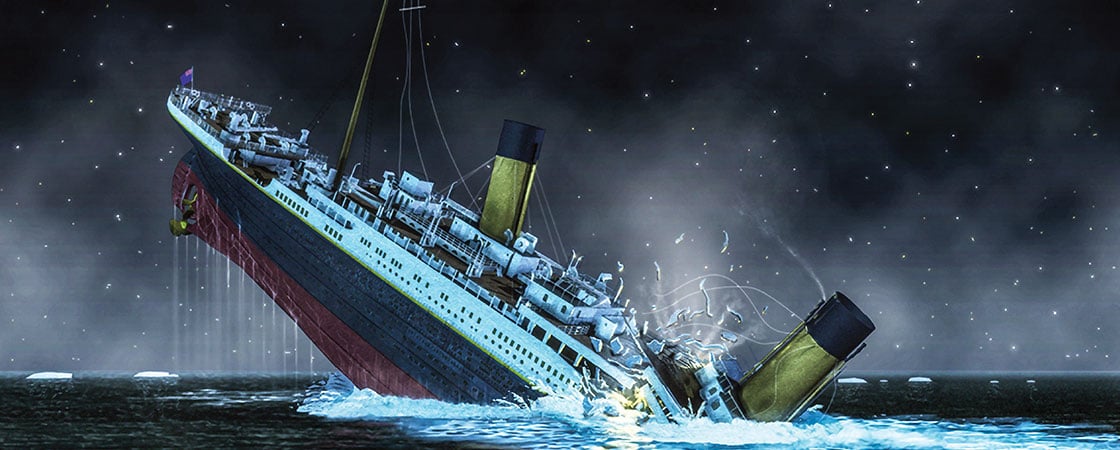On the night of April 14, 1912, the Titanic sped across the Atlantic Ocean. The sky glittered with stars over a sea as still as glass. On board were more than 2,200 people—bejeweled millionaires and hopeful immigrants, passengers from all over the world. This was the Titanic’s first voyage, but the luxury passenger liner was already world famous. Built from the strongest steel, according to the most modern designs, the Titanic was said to be unsinkable.
Then disaster struck.
At 11:40 p.m., the Titanic collided with an iceberg. As icy seawater flooded the ship, it quickly became clear that the Titanic was doomed—and so were most of those on board.
Two hours and forty minutes later, the magnificent ship disappeared into the inky-black waters of the North Atlantic.
Would it ever be seen again?
On the night of April 14, 1912, the Titanic sped across the Atlantic Ocean. The sky glittered with stars. The sea was still. On board were more than 2,200 people. There were bejeweled millionaires and hopeful immigrants, passengers from all over the world.
This was the Titanic’s first voyage. But already the ship was world famous. Built from the strongest steel, from the most modern designs, the Titanic was said to be unsinkable.
Then disaster struck.
At 11:40 p.m., the Titanic hit an iceberg. Icy seawater flooded the ship. It quickly became clear that the Titanic and most of its passengers were doomed. Two hours and forty minutes later, the magnificent ship disappeared into the inky-black waters of the North Atlantic. Would it ever be seen again?

